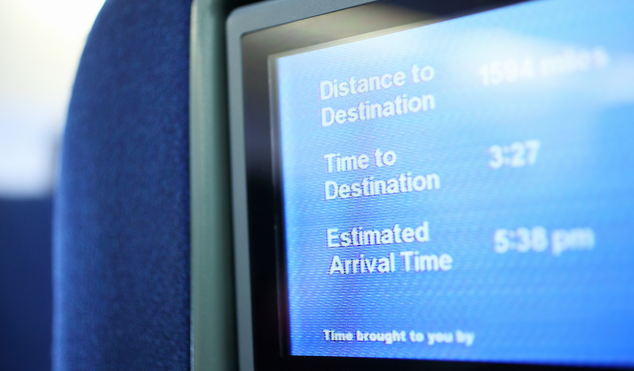The length of time an aircraft can stay in the air has gradually extended until a non-stop crossing of the planet is becoming a reality. Artemis Aerospace looks into lengthening flights and the current longest non-stop journey.
When the pioneering Wright brothers’ flimsy aeroplane left the ground on 17th December 1903, the record-breaking first flight lasted for just twelve seconds and travelled 120 feet. It was a groundbreaking moment and opened up the possibility of air travel which, a hundred and twenty years later, is an industry estimated to be worth US$841.5 billion.
The first scheduled commercial flight took place in 1914 and covered 21 miles, and the length of time an aircraft can travel without a stopover has gradually been extended year on year.
A long-haul flight is one which exceeds seven hours, and any flight that exceeds sixteen hours is defined as ‘ultra long-haul’. The duration of a flight is normally timed from the second the plane’s wheels begin to turn until it comes to a complete stop, a measurement known in the aviation industry as ‘chocks to chocks’.
Since the pandemic, airlines have been steadily increasing the number of ultra long-haul flights. The development of new aerospace technology has enabled the viability of more nonstop flights and the demand for these is high.
Even prior to the pandemic, airlines were moving away from the four-engined model towards two engines. With the worldwide focus on sustainability, two engines are a more efficient use of fuel as airlines try to reduce their carbon footprint. In addition, two-engined aircraft can fly safely for the same length of time as four-engined ones. ETOPS rules (Extended-range Twin-engine Operations Performance Standards) state that a twin-engined aircraft must always be a specific distance from a diversion airport in case one engine fails. With advances in engine reliability, ETOPS regulators are allowing two-engined aircraft to fly increasingly further from the nearest safe airport in the event of an engine shutting down. Initially, these aircraft were only allowed to be an hour away, but now three hours is generally the maximum, which means two-engined aircraft can fly virtually any global route.
The two twin-engined next generation aircraft which have transformed air travel in the last few years are the Boeing 787 and the Airbus A350. Both are capable of flying ultra long-haul, have impressive fuel efficiency, and their operating costs are lower than the older four-engined planes like the 747. They also carry fewer passengers, which helps to maximise profit, and the ETOPS limit for the Airbus 350 is an incredible 370 minutes.
The current longest ultra long-haul flight is undertaken by an Airbus A350 for Singapore Airlines daily and is the route which operates between New York’s JFK Airport and Singapore Airport. It’s an approximate distance of 9,537 miles and has a scheduled time of 18 hours and 50 minutes for the JFK/SIN route and 18 hours and 40 minutes for the SIN/JFK return journey.
The second-longest route is also an Airbus 350 for Singapore Airlines and operates from Singapore to Newark Liberty International Airport, New Jersey, which is 9,523 miles and has a scheduled time of 18 hours 45 minutes for Newark to Singapore and 18 hours 25 minutes for the return.
Jumping into third place is another Airbus 350, this time for Qatar Airways, flying from Doha to Auckland, New Zealand, a journey of 9,032 miles and 17 hours, 30 minutes.
However, the competition is hotting up. Australia’s flag carrier, Qantas, is on course to take the top spot with flights announced for 2025 which will connect London and New York with Melbourne and Sydney using an Airbus 350. These flights would be in excess of 10,000 miles and are estimated to take up to 22 hours. The plan for this route has been named Project Sunrise because passengers on board will get to see the sun rise twice.
Qantas is allowing for 238 passengers per flight, a relatively small number, in an acknowledgement of the fact that they will be on board for so long and will therefore need more space. A typical ultra long-haul flight would normally take around 300. The cabin design has a ‘Wellbeing Zone’, which will include a bespoke stretch and movement space, a guided on-screen exercise programme, a hydration station and a substantial choice of refreshments. Business class suites will have extra-wide beds, a wardrobe, reclining chair, dining table and a 32-inch TV, while the rest of the seats will have 33 inches of legroom, ergonomic leg and footrest systems, a 13-inch TV screen and multiple charging ports.
In a little over a hundred years, the length of a flight has gone from 12 seconds to 22 hours, and the record will doubtless continue to be beaten. It’s a remarkable technological achievement and testament to our desire to continue to reach for the sky.
Artemis Aerospace offers an innovative approach to component solutions for the aviation sector. Established in 1999, the company has earned a reputation for outstanding customer service by solving problems and providing a range of realistic options that offer customers the flexibility and freedom to choose a solution that suits their timescale and budget. Its services include component supplies, component repairs, lessor support, flight simulation hardware support, consignment stock management and global aircraft logistics.
With decades of expertise in global aviation logistics, the expert team works with trusted MROs, OEMs, and aftermarket suppliers around the world to offer 24/7 support to its global customer base.
Website: www.artemisaerospace.com







Be the first to comment on "Is the sky the limit? The longest flight in the world …"